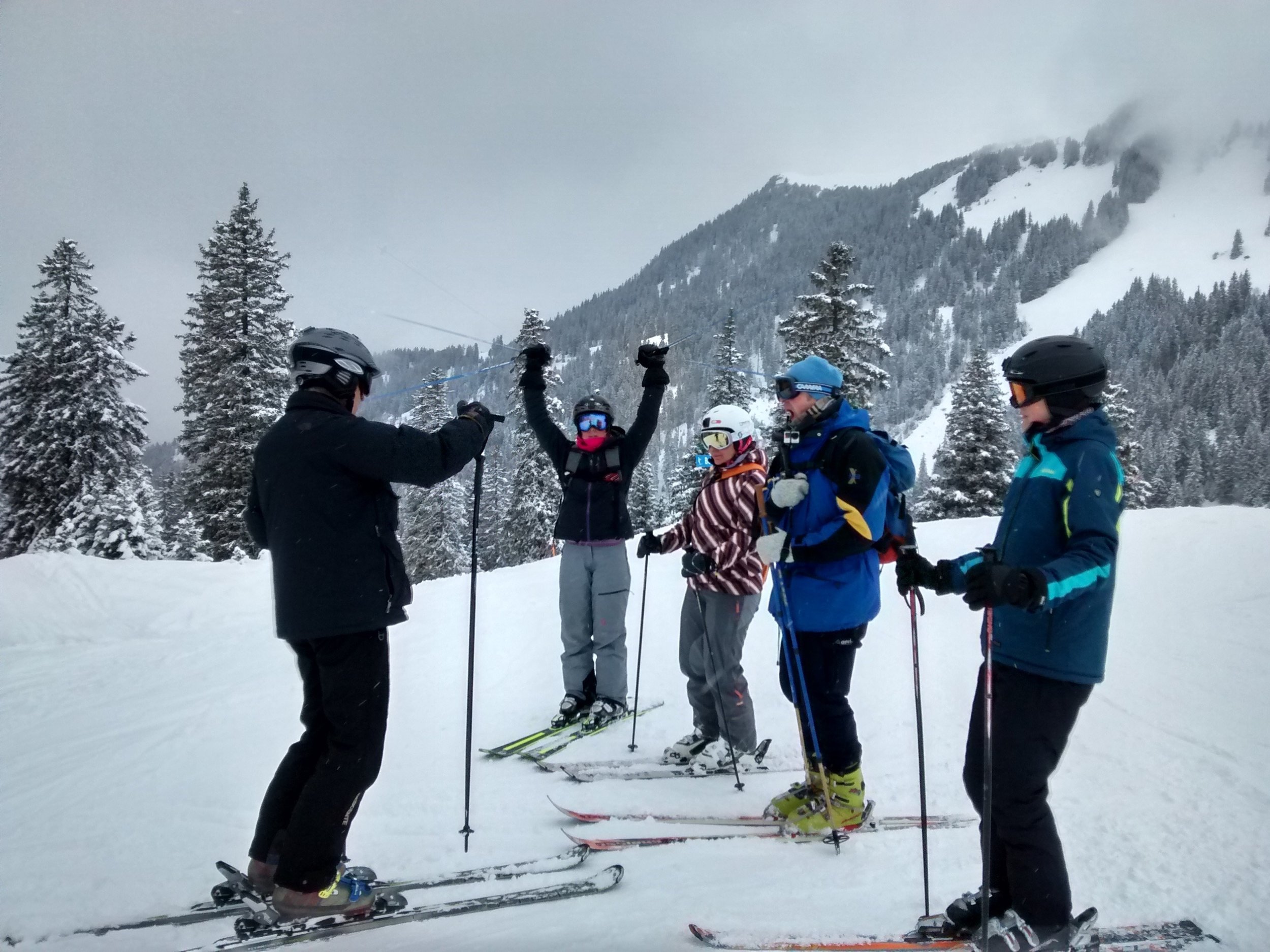There is the first keyword: lesson. The Alexander Technique is not therapy; there aren't patients who come for treatment. The relationship is that of student to teacher. A student comes to investigate something about the Technique, and the teacher teaches the student the basic principles of the Alexander Technique.
Alexander students do not get a massage. The hands on work in an Alexander Technique lesson is gentler and lighter than a massage and is usually accompanied with verbal instruction. Clothes are not removed in a lesson, though it is helpful for the student to where non-restrictive, loose fitting clothing.
The technique is not a cure for diseases or infirmities. As one studies the Technique, symptoms of pain are often relieved, such as back pain, neck pain, sciatica, repetitive strain injury, carpal tunnel syndrome, tendinitis, etc.
The technique is not about fixing posture or breathing. However, those are usually two aspects of one's use of the self that are improved through study.
The technique is not about relaxation, though many experience releases of tensions and become more relaxed as they study the Technique.
The technique is not about getting in and out of our chair. This is a tool used by many teachers because Alexander used it himself to teach, and to change people's habits of use. In the act of sitting to standing and vice versa, most of the major joints of the body are used to some degree, such as the hip joints, knee joints, and ankle joints, etc. Alexander found that by using an every day movement, he could easily discover a person's particular habits of use and then teach them something about their use that would be helpful in bringing about a more efficient and useful way of moving.
So what does one do when one studies the Alexander Technique? Every teacher's approach is different but all teachers are instructing their students in the basic principles of the technique, and all teachers are practicing the technique themselves as they teach. What are the principles? There are three general principles: awareness, inhibition (pausing for stopping) and direction. There are also three important concepts: primary control, end–gaining, and debauched kinesthesia. Below is a brief description of the concepts and principles:
The Concepts
The first concept is something called primary control, which can be thought of as a state of coordination, that when this state is working well, there is the least amount of interference of the working parts of an organism. F. M. Alexander figured out that he could quickly change a person's way of moving by addressing a certain area: the dynamic balance of the head (skull) to the neck and back (spine). During his own development of his work, he discovered that if the balance point of the skull to spine during a particular activity is in its optimal range, the whole body is affected positively, with muscular effort and tension in its most efficient range. If the balance point of the skull to spine is off center during an activity, usually with the skull pressing back and down onto the spine, the whole body is affected negatively, with muscular effort and tension often increased in areas where it is not needed, and decreased in areas where it is needed. The place of choice to help a person changed their coordination for Alexander Technique teachers is at the relationship of the head and neck to the back (one change affects the other.) This primary control is central to the overall coordination of humans.
The second concept of the Alexander Technique is the term means and ends - something Alexander called "end-gaining," which is the extremely important manner in which he finally learned to change unconscious habits, over which previously no amount of will power would change them. He did this by learning to be in the moment, not focusing on his goal of his activity (end), but how he was doing it, his steps to get there, his preparation, is thinking, etc. (means/"means whereby").
The last concept is about one's physical sense of self in space being unreliable. Alexander had a term for this, too: debauched kinesthesia. It means one is so used to his habits and the way he does things, when something changes it feels wrong, or even impossible. It also means sometimes someone thinks he is doing one thing when he is actually doing something else. The Alexander Technique helps one become more aware of his kinesthetic sets, and importantly, how to discern and distinguish between habitual (old) and consciously controlled (new) ways of doing things.
The Principles
In order to change a habitual response to a stimulus (a habit), the first step is an awareness that one is responding somehow to that stimulus. Awareness Is learning or knowing what one is doing. Most people are not aware of their habits up unnecessary tension. In an Alexander Technique lesson, a teacher helps a student identify what he is doing that is preventing him from achieving his desired results, i.e. having less pain, a better performance, etc. Over time the student becomes more educated about his own use of himself and begins to identify previously unconscious habits.
After the student has become aware of the habituated response, he learns the next step in the process of change, inhibition. Inhibition is the act of stopping or pausing. Alexander discovered that will power alone was not enough to change the way he was doing a certain activity. His response to beginning a common activity, for example speaking, brought such a strong habituated memory of the way he spoke, he had to stop for a moment before continuing. If he didn't stop, the force of the habit took over. If he did stop, he was able to choose to do something different instead of his habit.
Doing something different instead of the habit became known as direction. Direction is the ability to use thought to do something new (non-habituated response.) Alexander learned to 'direct a new use of himself' after applying inhibition to a habit. He could perform the same activity, such as speaking, with improved use, or he could choose to do something entirely different in the moment of beginning to speak. He did this by consciously thinking certain thoughts about how he wanted the activity performs, i. e. with a neck free, head forward and up, torso lengthened and widened, etc. These thoughts produced the desired effect of decreased muscular effort, and an overall improved coordination.
The paradox of the Alexander Technique is that many things people think the Technique is about is not what it is about, although the Technique does the very things they think it is about. A few examples: it is not about re-educating the kinesthetic sense, but it does just that. It is not about curing pain, improving posture or breathing, or relaxing, though it does those things as well. It is not about getting a massage, though one lies on a massage table and receives hands-on work. It is not about getting in and out of the chair, though even Alexander himself said, "people will think this work is about getting in and out of the chair, but it's not about that at all." Another paradox is that the three main principles of awareness, inhibition, and direction are very simple and seemingly separate, but ask an Alexander Technique teacher to describe any one idea, and they may speak for five minutes and cover all the principles and the concepts of the technique. It is impossible to separate and categorize the work, because to do so compartmentalizes concepts are interdependent.
During my second year of training I made up some one-liners. Explaining the Technique to novices often eluded me, and still does. I began this writing in an attempt to simplify or clarify what it is we teach. I had hoped for one page and am now on the third, which is just a reminder of how all encompassing this work is.
The Alexander Technique is a way to be in the moment.
The Alexander Technique is a way to be easier with oneself.
The Alexander Technique is stopping the wrong thing, so the right thing can do itself.
The Alexander Technique is finding something new without looking for it.
The Alexander Technique is rediscovering our innate ability to be coordinated.
The Alexander Technique gives us conscious control, or choices, over the habitual, giving us more freedom to choose.
The Alexander Technique combines thought with movement.
The Alexander Technique is regenerative, rather than degenerative.
The Alexander Technique can be a way of living.
The Alexander Technique gives you more of your real self you forgot you had, and finally...
The Alexander Technique helps you change what you thought you were stuck with.












 by Emily Faulkner
This past February, I had the good fortune to travel to the Alps to take Erik Bendix’ one week Ease on Skis workshop. I am a passionate skier, and not too bad at it, but having started skiing late in life, I am always frustrated by how slowly I seem to progress and how hampered I am by fear. As a dancer, I love to move. The technique of skiing - the rhythm and the fluid motion – is magical when it comes together, but frustratingly elusive. As soon as I approach a pitch that seems too steep, a patch of ice, or some unexpected bumps, fear takes over, my technique goes out the window, and skiing becomes a matter of survival instead of joy. The Alexander Technique is, of course, the perfect medium by which to analyze fear and response. Enter Ease on Skis!
by Emily Faulkner
This past February, I had the good fortune to travel to the Alps to take Erik Bendix’ one week Ease on Skis workshop. I am a passionate skier, and not too bad at it, but having started skiing late in life, I am always frustrated by how slowly I seem to progress and how hampered I am by fear. As a dancer, I love to move. The technique of skiing - the rhythm and the fluid motion – is magical when it comes together, but frustratingly elusive. As soon as I approach a pitch that seems too steep, a patch of ice, or some unexpected bumps, fear takes over, my technique goes out the window, and skiing becomes a matter of survival instead of joy. The Alexander Technique is, of course, the perfect medium by which to analyze fear and response. Enter Ease on Skis!